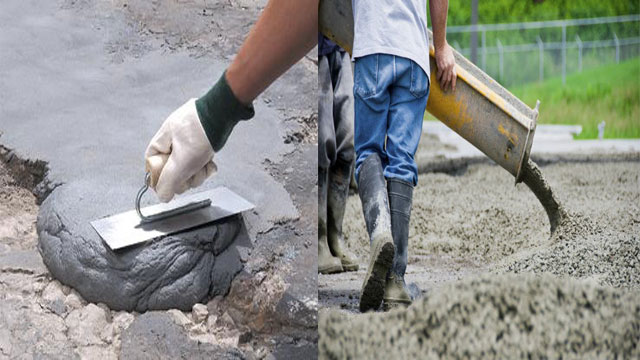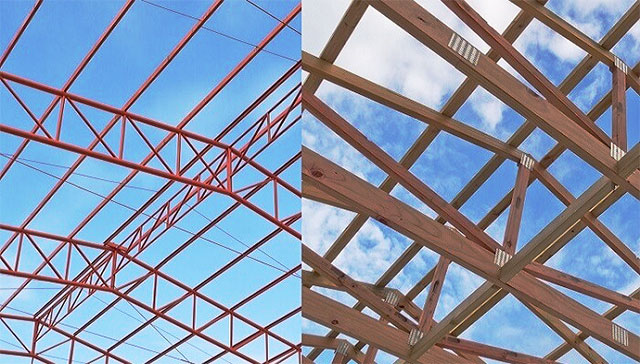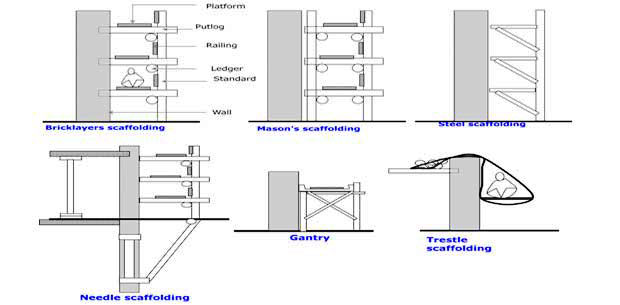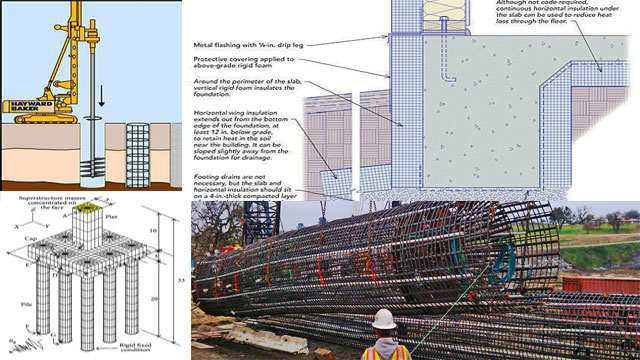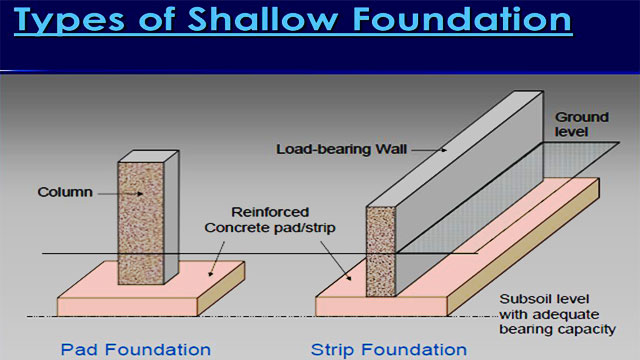Shallow foundation
A shallow foundation is defined as the foundation that transmits the building loads to the earth adjacent to the surface. It’s depth is equivalent to or under its width.
Categories of shallow foundation:
1. Spread footingThe role of Spread footing is to extend the super imposed loads of the structure over a extensive zone.
Spread footing is subcategorized as below :
• Single footing for a column.
• Stepped footing for a column.
• Sloped footing for a column.
Concrete is utilized to create the base of these types of footings.
• Wall footing without steps and with steps.
• Grillage foundationgrillage foundation is considered as most cost effective while transmitting the heavy structural loads concerning a column to the soil of low bearing capacity. Depth of such a foundation is restricted to 0.9 to 1.6 meter.
2. Combined footing
The combined footing is developed for two or more columns.
Shape of combined footing is balanced in such a ratio so that the center of gravity of the supporting area remains consistent with the center of gravity of the two column loads. It is formed as either rectangular or trapezoidal.
A combined rectangular footing is useful where both the columns bear identical load or interior column bears superior load. A combined trapezoidal footing is arranged under any situations of loading.
3. Strap footing Strap footing is undertaken when two or more footings are associated with a beam. It is required when the distance among the columns is so excessive that a combined trapezoidal footing turns to be little constricted, containing great bending moments.
4. Mat or Raft foundation Mat or raft foundation is described as a consolidated reinforced concrete slab that covers the entire region of the bottom of the structure.
Mat or raft foundation is useful in the following conditions :-
• If the soil located below contains bearing capacity as well as the building loads are substantial.
• If the combined area of individual footing exceeds half of the total area of the structure, then application of mat or raft foundation will be cost effective.
~~~~~~~~~~~~~~~~~~~~~
Published By
Rajib Dey
~~~~~~~~~~~~~~~~~~~~~
